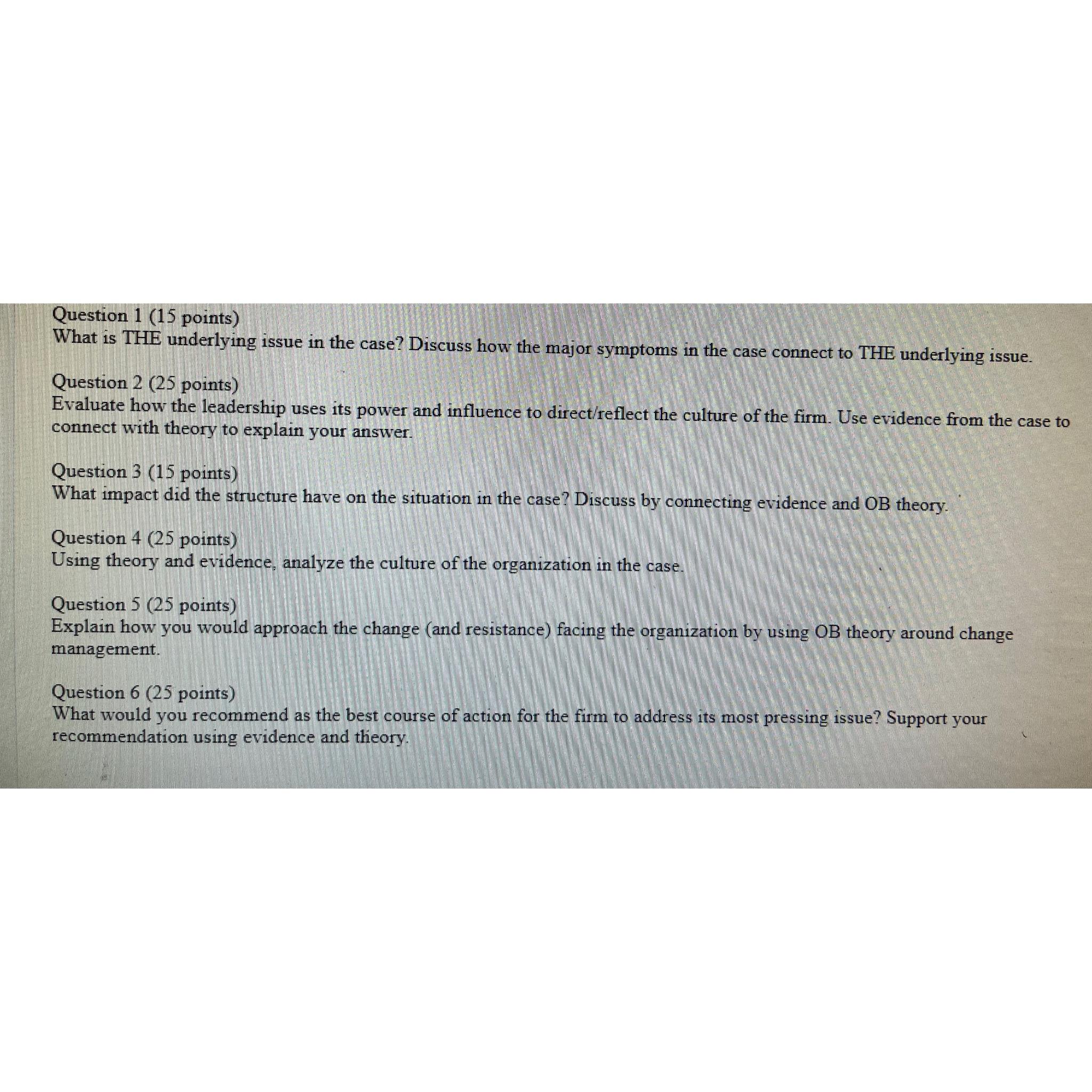Answered step by step
Verified Expert Solution
Question
1 Approved Answer
During these expansion years, Hillton put most of its money into outside ( also called hard ) municipal services. These included road building, utility construction
During these expansion years, Hillton put most of its money into "outside" also called "hard" municipal services. These included road building, utility construction and maintenance, fire and police protection, recreational facilities, and land use control. This emphasis occurred because an expanding population demanded more of these services, and most of Hillton's senior people came from the outside services group. For example, Hillton's city manager for many years was a road development engineer. The "inside" workers taxation community services, etc. tended to have less seniority and their departments were given less priority.
As commuter and road systems developed, Hillton attracted more upwardly mobile professionals into the community. Some infrastructure demands continued, but now these suburban dwellers wanted more of the "soft" services, such as libraries, social activities, and community services. They also began complaining about the way the municipality was being run. By this time, the population had more than tripled, and it was increasingly apparent that the organization needed more corporate planning, information systems, organization development, and cost control systems. In various ways, residents voiced their concerns that the municipality was not providing the quality of management that they would expect from a city of its size.
A few years ago, a new mayor and council replaced most of the previous incumbents, mainly on the platform of improving the municipality's management structure. The new council gave the city manager, along with two other senior managers, an early retirement buyout package. Rather than promoting from the lower ranks, council decided to fill all three positions with qualified candidates from large municipal corporations in the region. The following year, several longterm managers left Hillton, and at least half of those positions were filled by people from outside the organization.
In less than two years, Hillton had eight senior or departmental managers hired from other municipalities who played a key role in changing the organization's value system. These eight managers became known often with negative connotations as the "professionals." They worked closely with one another to change the way middle and lower level managers had operated for many years. They brought in a new computer system and emphasized cost controls where managers previously had complete autonomy. Promotions were increasingly based more on merit than seniority
The "professionals" frequently announced in meetings and newsletters that municipal employees must provide superlative customer service and that Hillon would become one of the most customerfriendly places for citizens and those who do business with the municipality. To this end, these managers were quick to support the public's increasing demand for more "soft" services, including expanded library services and recreational activities. And when population growth recently flattened out, the city manager and other professionals gained council support to lay off a few of the outside workers due to lack of demand for hard services.
One of the most significant changes was that the "outside" departments no longer held dominant positions in city management. Most of the "professional" managers had worked exclusively in administrative and related inside jobs. Two had Master of Business Administration degrees. This led to some tension between the professional managers and the older outside managers.
Even before the layoffs, managers of outside departments resisted the changes more than others. These managers complained that their employees with the highest seniority were turned down for promotions. They argued for more budget and warned that infrastructure problems would cause liability problems. Informally, these outside managers were supported by the labour union representing outside workers. The union leaders tried to bargain for more job guarantees, whereas the union representing inside workers focused more on improving wages and benefits. Leaders of the outside union made several statements in the local media that the city had "lost its heart" and that the public would suffer from the actions of the new professionals.
Question points
What is THE underlying issue in the case? Discuss how the major symptoms in the case connect to THE underlying issue.
Question points
Evaluate how the leadership uses its power and influence to directreflect the culture of the firm. Use evidence from the case to connect with theory to explain your answer.
Question points
What impact did the structure have on the situation in the case? Discuss by connecting evidence and OB theory.
Question points
Using theory and evidence, analyze the culture of the organization in the case.
Question points
Explain how you would approach the change and resistance facing the organization by using theory

Step by Step Solution
There are 3 Steps involved in it
Step: 1

Get Instant Access to Expert-Tailored Solutions
See step-by-step solutions with expert insights and AI powered tools for academic success
Step: 2

Step: 3

Ace Your Homework with AI
Get the answers you need in no time with our AI-driven, step-by-step assistance
Get Started


